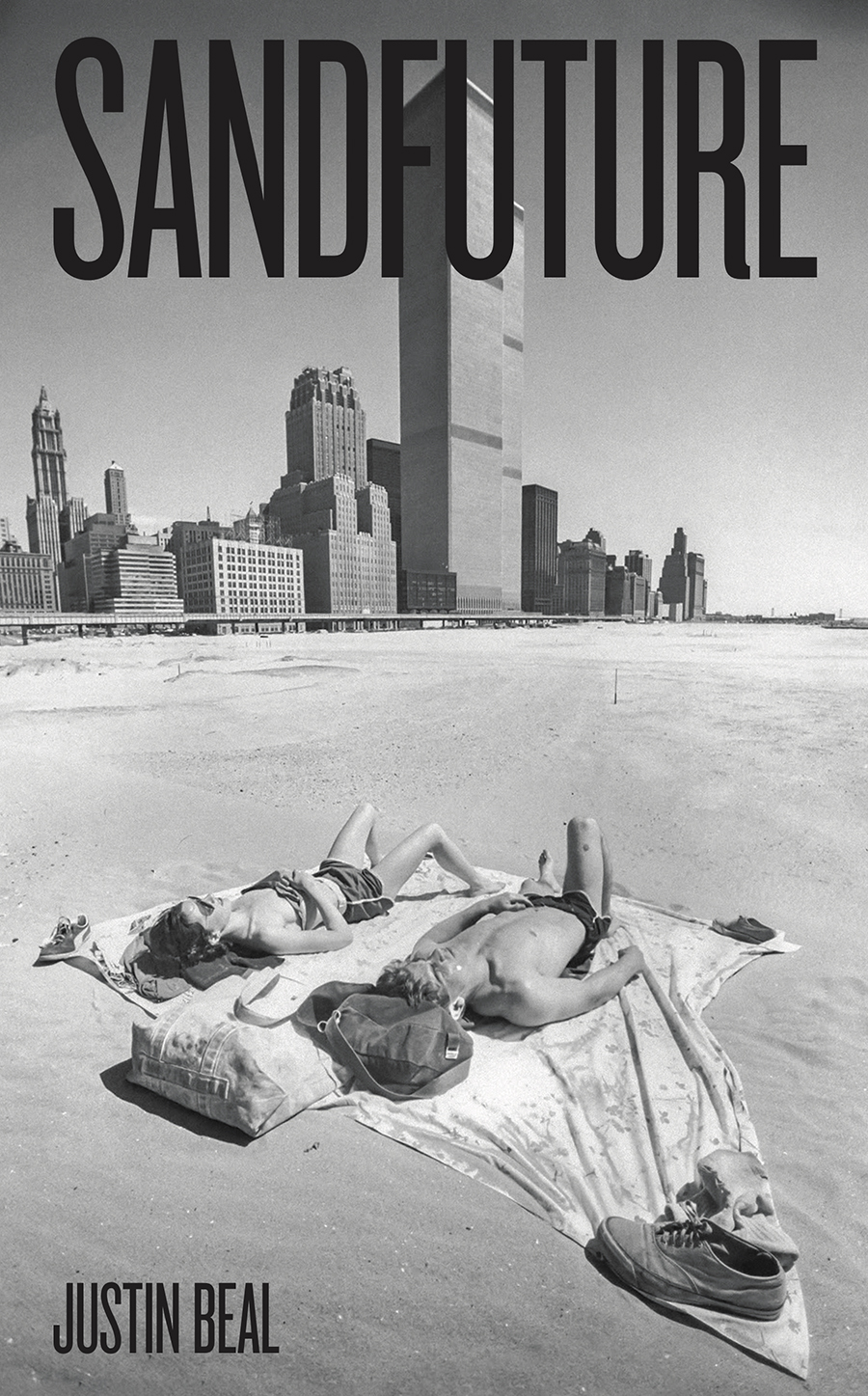Sandfuture, by Justin Beal. Cambridge, Massachusetts: The MIT Press, 2021; 256 pages, $24.95.
Were you to scoop up a copy of Sandfuture at random, knowing nothing of its subject — maybe drawn by the vaguely sci-fi title or the retro photo of New York City on its cover — chances are good that for a time you’d assume that you had stumbled onto a memoir, and a well-written one at that. Confident writing, most likely from an experienced author, devoid of pointless showiness and full of well-drawn, novelistic “days in the life of” detail but also about the city and its architecture, buildings, and infrastructure.
Gradually, you’d come to understand that the book — not by an established author but a first-time one, a visual artist — is in fact an intriguing hybrid. Is it memoir? In part, yes. But it is also about the history of modern architecture viewed through the lens of New York City. And it is also very much about an important and controversial 20th-century architect named Minoru Yamasaki, designer of the World Trade Center towers and originally the book’s singular focus.
How did this come to be? Before attempting to explain Sandfuture further, it is helpful to allow the author, Justin Beal, to explain its genesis. In an interview with Metropolis magazine, Beal explains that he was years into researching Yamasaki for a biography when he learned to his dismay that someone else was also writing a book about the sometimes forgotten architect. “What I realized,” Beal said, was that “it was a huge weight off my shoulders — it removed this responsibility to account for everything in Yamasaki’s work and life and allowed me to instead write the book that I really wanted to write, which I think has more to do with the way I experience architecture.”

That is exactly what he proceeded to do, weaving together memories of a deeply personal nature about his own life with a particular focus on New York; Yamasaki’s story, both personally and professionally; and key aspects of the evolution and aspirations of modern architecture, for the good and the bad. Beal unflinchingly describes the career of Yamasaki — a prolific architect dedicated to the idea of “humanistic” modern buildings, who is nevertheless best known for two projects, the World Trade Center towers in New York and the Pruitt-Igoe public housing complex in St. Louis, that were widely derided as failures of modern architecture largely because of their lack of connection to the human. Meanwhile, Beal’s personal opinions and experiences with architecture are trenchant and unforced, and the life anecdotes he shares succeed in grounding the book further in the reality of human experience without ever feeling gimmicky.
Remarkably, Beal accomplishes all this with no chapter breaks, frequently shifting the narrative between the three threads without forcing clumsy narrative transitions — and somehow it works.
There is no question that this will be the most distinctive book about architecture that readers will come across this year.



